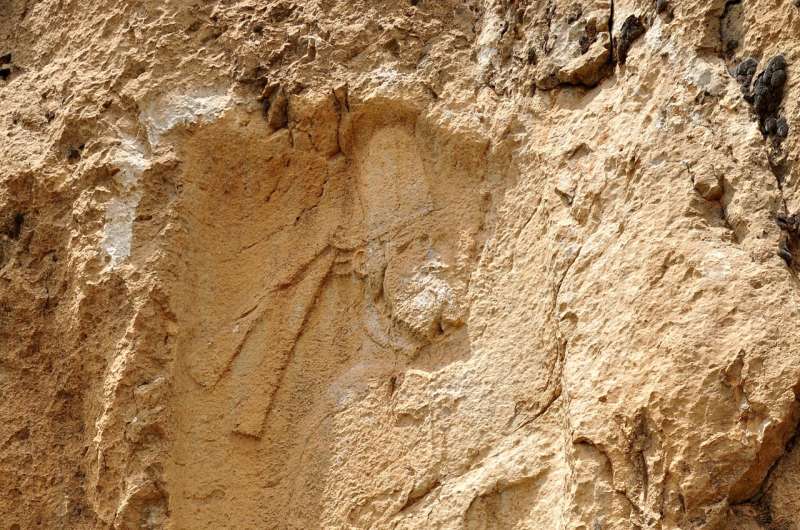This article has been reviewed according to Science X's editorial process and policies. Editors have highlighted the following attributes while ensuring the content's credibility:
fact-checked
trusted source
proofread
Rabana-Merquly: Was the mountain fortress also a Parthian-era sanctuary?

Besides being a fortress for military use, the ancient mountain settlement of Rabana-Merquly in modern Iraqi Kurdistan could have also been a 'sanctuary' dedicated to the ancient Persian water goddess Anahita. Architectural structures by a natural waterfall, along with the remains of a possible fire altar, point to the existence of a site of worship, according to Dr. Michael Brown.
The researcher from the Institute of Prehistory, Protohistory, and Ancient Near Eastern Archaeology of Heidelberg University has led excavations there for several years.
The mountain fortress of Rabana-Merquly was an important regional center of the Parthian Empire, which extended over parts of Iran and Mesopotamia approximately 2,000 years ago. Situated on the southwest flanks of Mt. Piramagrun in the Zagros Mountains, it comprises not only the nearly four-kilometer-long fortifications but also two smaller settlements for which it is named.
An international research team studied the archaeological remains on site within the framework of multiple excavation campaigns conducted from 2009 and, most recently, between 2019 and 2022. Overlooking the fortified entrance to Rabana is a rock relief depicting an anonymous ruler, who was most likely a local Parthian vassal king credited with the site's foundation. Inside Rabana Valley, the researchers also discovered a religious complex that could have been dedicated to the goddess Anahita.
The water goddess Anahita was first mentioned in a manuscript collection of the Zoroastrian religion called the Avesta. There, she appears as the celestial source of all the waters on Earth; she is described as a larger-than-life beautiful woman who can assume the form of a flowing stream or waterfall. The cult of Anahita was highly venerated in the western regions of Iraq during Seleucid and Parthian times.
The hypothesis that a possible Anahita shrine is part of the Rabana-Merquly mountain fortress is based mainly on finds of architectural extensions in the natural surroundings of a seasonal waterfall located on the fortress site. The researchers also discovered an altar-like sculpture nearby carved into an escarpment, where offerings or oil may have been burned.
"The proximity to the waterfall is significant because the association of fire and water elements played an important role in pre-Islamic Persian religion," states Michael Brown.
The site includes the remains of a building where, in 2022, archaeologists unearthed two characteristic burial vessels that were radiocarbon dated to the second to first century BC. That suggests that the shrine was in use during the period in which the fortified settlements of Rabana and Merquly arose. According to Dr. Brown, there may have been a pre-existing shrine that was absorbed into the Anahita cult during the Parthian era, which could have been pivotal in the occupation of the mountain.
At that time many religious sites also functioned as dynastic cult sites honoring the king and his forebears, explains the Heidelberg archaeologist. Worshipers approaching the 'sanctuary' would have passed under the ruler's rock relief and were undoubtedly aware of the strong link between place, royalty, and cult.
"Even if the cult site cannot be definitively attributed to the water goddess Anahita due to the lack of similar archaeological finds for direct comparison, the Rabana sanctuary still provides us with a fascinating glimpse into the regional sacral and geopolitical interconnections during the Parthian era," states Dr. Brown.
The paper is published in the journal Iraq.
More information: Michael Brown et al, A possible Parthian-era Anahita sanctuary at Rabana in the Kurdistan region OF Iraq, Iraq (2024). DOI: 10.1017/irq.2023.6
Provided by Heidelberg University




















